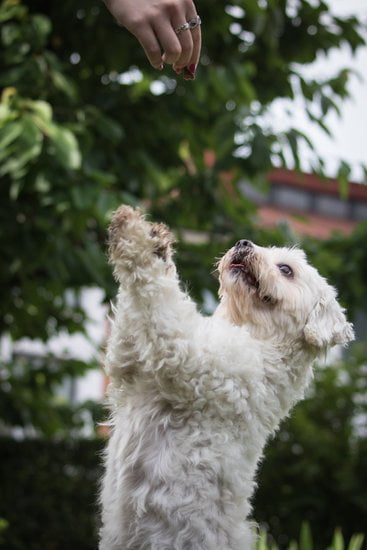Are you wondering how to train a dog to stop peeing indoors? You’re not alone. Many pet owners struggle with this issue, but with the right approach, it is possible to teach your furry friend proper potty behavior. In this article, we’ll explore effective strategies for training your dog to eliminate outdoors and put an end to indoor accidents.
Understanding the root of the problem is crucial when addressing indoor peeing behavior in dogs. There are various reasons why dogs may urinate inside the house, including lack of housetraining, anxiety, territorial marking, or medical issues. By delving into the underlying causes of indoor peeing, you can tailor your training approach to meet your dog’s specific needs and effectively resolve the problem.
Setting realistic expectations is essential when embarking on a journey to train your dog. As with any type of training, teaching a dog to stop peeing indoors takes time, patience, and effort.
It’s important for pet owners to understand that success won’t happen overnight and that consistency is key in achieving positive results. By committing to a structured training plan and understanding that setbacks may occur along the way, you can set yourself and your canine companion up for success.
Setting Realistic Expectations
Housebreaking a dog is not an overnight process. Setting realistic expectations is crucial to successfully train a dog to stop peeing indoors. This training takes time, effort, and patience, and it’s important for pet owners to understand that accidents will happen along the way. It is essential to approach the process with a positive mindset and be prepared for setbacks.
Consistency is key when it comes to housebreaking a dog. Establishing a routine for potty breaks helps the dog understand when and where they should relieve themselves. Regular potty breaks reduce the likelihood of accidents indoors as the dog gets used to the routine of going outside. It’s also important to remember that every dog is different, and some may take longer to grasp the concept of potty training than others.
In addition to regular potty breaks, providing positive reinforcement is an effective way to encourage outside peeing. When the dog relieves themselves outdoors, be sure to praise them, offer treats, or provide verbal encouragement. This positive association will help reinforce the desired behavior and motivate the dog to continue peeing outside.
| Aspect | Information |
|---|---|
| Time and Effort | Housebreaking takes time, effort, and patience. |
| Consistency | A consistent routine for potty breaks is important for successful housebreaking. |
| Positive Reinforcement | Praising the dog for peeing outside reinforces the desired behavior. |
Establishing a Consistent Routine
One of the most critical aspects of training a dog to stop peeing indoors is establishing a consistent routine that includes regular potty breaks. Dogs, like humans, thrive on routine and predictability. By taking your dog out for potty breaks at the same times every day, you can help them understand when and where it’s appropriate to relieve themselves.
It’s essential to take your dog outside first thing in the morning, after meals, before bedtime, and several times throughout the day. Puppies may need even more frequent opportunities to go outside due to their smaller bladders. Additionally, understanding your dog’s individual needs and behaviors can help you anticipate when they may need a bathroom break.
To aid in establishing a regular routine, try using cues such as specific words or phrases that signal to your dog that it’s time to go outside. Over time, they will associate these cues with the act of going to the bathroom which can be incredibly helpful in reinforcing good behavior.
Finally, patience is key when establishing a consistent routine for potty breaks. It may take some time for your dog to adapt to this new schedule and form habits. With consistency and persistence, you can help your furry friend learn where they should be peeing and ultimately prevent accidents indoors.
| Aspect | Importance |
|---|---|
| Consistent Routine | Establishing a regular schedule helps dogs understand when and where it is appropriate to relieve themselves. |
| Cues | Using verbal cues or phrases helps dogs associate specific words with going outside. |
| Patience | Persistently following the established routine helps dogs adapt and reinforce good behavior. |
Positive Reinforcement
Choosing the Right Rewards
It’s important to find out what motivates your dog. For some dogs, food treats like small pieces of chicken or cheese work well as a reward for going potty outside. For others, verbal praise and petting may be enough. Understanding what your dog responds to best will help you choose the most effective reward for successful potty trips outdoors.
Timing of Rewards
When using positive reinforcement, timing is crucial. The reward needs to be given immediately after the dog has finished going potty outside. This way, the dog associates the reward directly with the act of peeing outdoors. If you wait too long or give the reward inside, your dog may not make the connection between the behavior and the reward.
By consistently using positive reinforcement and providing rewards that motivate your dog, you can effectively encourage them to change their bathroom habits and ultimately stop peeing indoors. This method requires patience and consistency but can lead to lasting results in housebreaking your furry friend.
Addressing Medical Issues
Recognizing Signs of Medical Issues
Before assuming that your dog’s indoor peeing is solely a behavioral issue, it’s important to consider the possibility of an underlying medical problem. Some signs that may indicate a medical issue include excessive urination, straining to pee, blood in the urine, or dribbling urine. If you notice any of these symptoms, it’s crucial to consult a vet as soon as possible to rule out any health concerns.
Medical Conditions That Can Cause Indoor Peeing
There are several medical conditions that can contribute to a dog peeing indoors, such as urinary tract infections, bladder stones, diabetes, and kidney disease. These conditions can lead to increased frequency of urination or accidents inside the house. Additionally, older dogs may experience incontinence due to weakening bladder control muscles. Only a veterinarian can properly diagnose and treat these conditions, so if you suspect your dog’s indoor peeing is related to a medical issue, seek professional guidance promptly.
Seeking Veterinary Advice
If you’ve ruled out behavioral issues and suspect that your dog’s indoor peeing is due to a medical issue, it’s important to schedule an appointment with your vet. During the visit, the vet will conduct a thorough physical examination and may request urine and blood tests to determine the root cause of the problem.
Depending on the diagnosis, the vet will develop an appropriate treatment plan tailored to your dog’s specific condition. It’s crucial not to delay seeking veterinary advice in case there’s an underlying health concern contributing to your dog’s indoor peeing behavior.
By addressing potential medical issues promptly and effectively treating any conditions discovered through veterinary consultation, you can help ensure that your efforts to train your dog not to pee indoors are more successful. Always prioritize your pet’s health when addressing problematic behavior like indoor peeing.
Avoiding Punishment
When it comes to training a dog to stop peeing indoors, it’s crucial to avoid punishment as much as possible. While it might be tempting to scold or show negativity towards your dog when accidents happen, this approach can actually have negative consequences and hinder the training process. Here are some reasons why avoiding punishment is important in this aspect of dog training:
1. Negative association: When a dog is scolded or punished for peeing indoors, they may start associating the act of peeing with fear, stress, or anxiety. This can lead to even more indoor accidents as the dog may try to find hidden spots to avoid getting caught.
2. Inhibition of natural behavior: Dogs naturally have the instinct to eliminate when needed. Punishing them for something that comes naturally can lead to confusion and inhibition of this natural behavior, which can cause further behavioral issues in the long run.
3. Trust and bond issues: Constant punishment can undermine the trust and bond between you and your dog. Instead of fostering a positive relationship based on trust and respect, punishment can result in fear and insecurity in your pet.
By avoiding punishment and opting for positive reinforcement techniques, you can effectively train your dog to stop peeing indoors while maintaining a healthy and happy relationship with your furry friend.
Remember that patience and consistency are key components of successful potty training. While it may take time and effort to see results, using positive reinforcement will ultimately create a more trusting and rewarding relationship between you and your canine companion.
Utilizing Crate Training
Crate training is a valuable tool for housebreaking a dog and teaching them to stop peeing indoors. A crate can serve as a safe, den-like space for your dog, where they are less likely to have accidents. It can also help with establishing a routine and managing their behavior when left unsupervised.
When using crate training for housebreaking, it’s important to choose the right size crate for your dog. The crate should be just big enough for them to stand up, turn around, and lie down comfortably. Any larger and the dog may use one end as a bathroom area.
Once you have the appropriate sized crate, it’s important to make the crate a comfortable and inviting space for your dog. You can do this by placing soft bedding inside and adding some of their favorite toys. It’s also essential to associate positive experiences with the crate by feeding them meals inside or giving them treats when they willingly go in.
- Choose an appropriate sized crate
- Make the crate comfortable and inviting
- Associate positive experiences with the crate
With proper crate training, dogs can learn to stop peeing indoors as they start to see their crate as their own personal space. Remember that patience and consistency are key when using this method, so be sure to stay committed to your training routine.
Patience and Perseverance
In conclusion, training a dog to stop peeing indoors requires patience and perseverance. Understanding the root of the problem is important, as it allows for targeted training efforts. It’s also crucial to set realistic expectations, as training takes time and effort. Establishing a consistent routine for potty breaks is essential, as it helps the dog understand when and where they should be relieving themselves.
Positive reinforcement is a powerful tool in training dogs, so using rewards to encourage outside peeing can be highly effective. However, it’s equally important to address any potential medical issues that may be contributing to the problem. Consulting a vet at the first sign of persistent indoor accidents can help rule out any underlying health issues.
Avoiding punishment and negativity is key in successful housebreaking. Instead, utilizing crate training as a tool can aid in preventing indoor accidents while the dog learns proper bathroom habits. Ultimately, patience and perseverance are fundamental in successfully training a dog to stop peeing indoors. It’s a process that requires time, consistency, and understanding from both the owner and the dog, but with dedication and positive reinforcement, it’s achievable.
Frequently Asked Questions
How Do You Train a Dog to Stop Peeing in the House?
Training a dog to stop peeing in the house requires patience, consistency, and positive reinforcement. It’s important to take the dog outside frequently, especially after meals and naps, to encourage them to pee outside.
When accidents happen inside, it’s best to clean the area thoroughly to remove the scent and avoid re-marking. Potty training takes time and effort, but with a consistent routine and positive reinforcement, most dogs can learn where it’s appropriate to urinate.
What Can I Give My Dog to Stop Him Peeing in the House?
Giving your dog access to ample opportunities for outdoor bathroom breaks is crucial in preventing indoor accidents. However, if you’re looking for additional help, some owners have found success using belly bands or wraps for male dogs or pee pads or artificial grass patches for female dogs during the training process.
These products can help prevent messes inside while still encouraging outdoor bathroom habits.
What Repels Dogs From Peeing Inside?
There are several natural substances that may repel dogs from peeing inside. Some pet owners have had success using white vinegar, lemon juice, or a mixture of water and essential oils like citronella or eucalyptus as repellents.
However, it’s important to test these substances in an inconspicuous area first to ensure they won’t damage surfaces in your home. Additionally, providing outdoor options and positive reinforcement for going outside is crucial in encouraging good bathroom habits.

Welcome to the blog! I am a professional dog trainer and have been working with dogs for many years. In this blog, I will be discussing various topics related to dog training, including tips, tricks, and advice. I hope you find this information helpful and informative. Thanks for reading!





